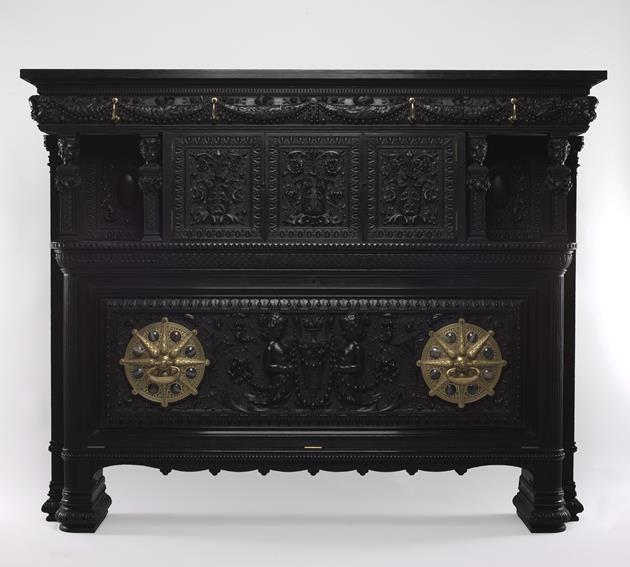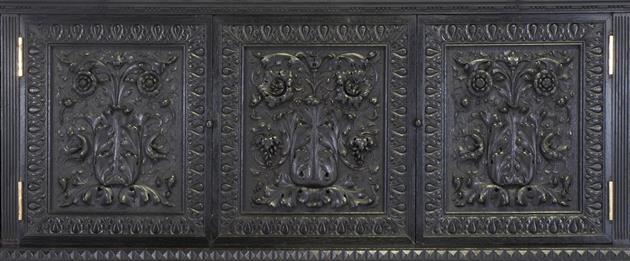Cabinet for the drawing room, Arabella Worsham/John D. Rockefeller House, 4 West 54th Street, New York
1881-82
"The things that go into the furnishing of a house are so vastly improved with us, and things once rare are now become so common… that it is a comparatively easy matter… for people in ordinary good circumstances to have their rooms looking not merely comfortable but handsome."
– Clarence Cook, art critic, 1881
In the 1870s and 1880s, Americans regarded art with unprecedented enthusiasm. The accumulation of objects of taste and beauty that began with the country's new wealthy captains of industry, who built homes to rival the princely palaces of European royalty, quickly spread to an ever-wider circle of the population. Art, design, decoration, ornament, beauty, style, art from the past, art from other cultures—all these terms were part of the common vocabulary of people who aspired to demonstrate a sense of fine taste.
This American cabinet is a magnificent example of Renaissance Revival, one of the great reform movements of the latter part of the nineteenth century. With its richness of detail, lavish materials and superb craftsmanship, the cabinet represents luxury furniture that did not lend itself to mass production. It was created by Herter Brothers, one of the most respected firms in the United States.
Ebonized oak with brass, and gilded bronze and agate pulls
60 1/2 x 75 3/4 x 13 1/4 in. (153.7 x 192.4 x 33.7cm)
Guendolen Carkeek Plestcheeff Endowment for the Decorative Arts, the Decorative Arts and Paintings Council and the Decorative Arts Acquisition Fund, in honor of the 75th Anniversary of the Seattle Art Museum
2006.5
Provenance: Unidentified dealer; sold to [Margot Johnson, Inc., New York]; sold to Seattle Art Museum, 2006
Photo: Beth Mann











